What IS film noir?
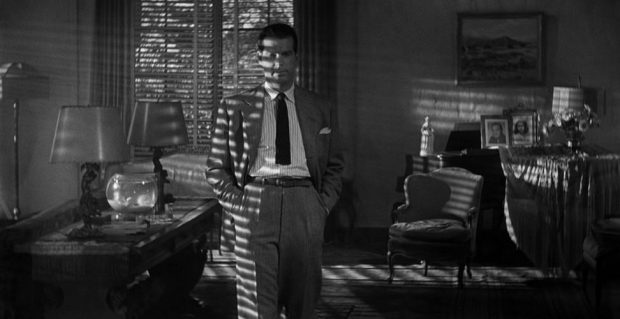
Black Film: It’s perhaps more of a style than a genre, the descendant of German expressionist films of the 1920s such as Dr. Mabuse, the Gambler (1922) and Pandora’s Box (1929), along with American gangster films of the 1930s , and crime and detective stories (published in France as série noire; then roman noir, and, on film in the 1940s and 1950s, film noir). There are homages or ‘neo-noirs’ (Chinatown, Marlowe (1969), Night Moves (1975)) and parodies (The Long Goodbye (1973), and The Big Sleep – the 1978 version, of which Lauren Bacall, asked if she had seen it, said “Has anyone?”) but the ‘golden age’ of true noir comprise the 1940s and 1950s.
Black Flags: If you see the following, you’re probably watching a film noir:
- Ambiguous morality: the characters in noir are not necessarily purely evil, but they are never saints. Morality arises, but in 50 shades of grey. But unlike neo-noir [e.g. Point Blank (1967)], there is a moral sense or code ever present.
- There is a fearful momentum to the noir: Fate pulls the strings of his marionettes, who accept their lot with world weary stoicism. As part of the stories in which they are trapped, flashbacks predominate (e.g. Out of the Past, Double Indemnity) and generally culminate in low tragedy.
- Black and White predominates, and chiaroscuro – light and shade and sweat and smoke (and the morning glare against the night-time rain) heighten the tension and accentuate the sense of danger and enigma. In Paul Schrader’s famous essay in Film Comment (1972), he observes: “No character can speak authoritatively from a space which is continually being cut into ribbons of light.” (See Fred MacMurray in Double Indemnity – main image).
- Labyrinthine, vaporous plots. (When the scriptwriters were working on The Big Sleep (1946), they got stuck and wired Raymond Chandler: “Who killed Owen Taylor?” Chandler replied: “I don’t know.”)
- The world is seen from a subjective frame of reference, distorting it radically for emotional effect in order to evoke moods or ideas.
- A cynical, fatalistic, robust, occasionally noble leading man (who may double as narrator). Chandler described his signature detective: “…rude wit, a lively sense of the grotesque, a disgust for sham and a contempt for pettiness.”
- The femme fatale or ‘black widow’ – who is up for romance but almost never for love. In fact, distrust of love predominates.
- A surprise betrayal. It is always a jolt – even if you’re watching for the 10th time – when Joel Cairo turns out to be in league with Kaspar Gutman in The Maltese Falcon, or when Jane Greer turns up at breakfast with Kirk Douglas in Out of the Past.
- Wise-guy dialogue: “The cheaper the crook, the gaudier the patter,” and also, premeditated violence.
- A paranoid, dangerous rival or rivals to the hero.
- Process-orientation: there’s a heck of a lot of opening and closing doors, getting in and out of cars (especially cabs), doffing and donning hats and coats, lighting and stubbing cigarettes, pouring and nipping at drinks, and production of guns.
- The City: a noir setting is not always urban (think Out of the Past, Key Largo, Leave Her to Heaven) but it plays out in town more often than not, particularly in NYC or LA. But some great noirs come from other countries than the U.S.
- Stars: you’ll often find people turning up like Humphrey Bogart, Barbara Stanwyck, Lizbeth Scott, Veronica Lake, Lana Turner, Gene Tierney, Gloria Grahame, Robert Mitcham, Alan Ladd, Sterling Hayden, Peter Lorre, Sydney Greenstreet, Elisha Cook Jr., Dan Duryea, Edward G. Robinson, Richard Conte, Dana Andrews…
Here’s our list of outstanding film noir offerings. Quality varies of course: not all are classics, but we think there is definite morbid interest in these works. (Suggestions and quibbles welcome). We’ve marked an asterisk by films that are ‘noirish’ to us but may not be pure film noir:
Stranger on the Third Floor (1940) (dir. Boris Ingster)
They Drive by Night (1940) (dir. Raoul Walsh)
The Maltese Falcon (1941) (dir. John Huston)
I Wake Up Screaming (1941) (dir. H. Bruce Humberstone)
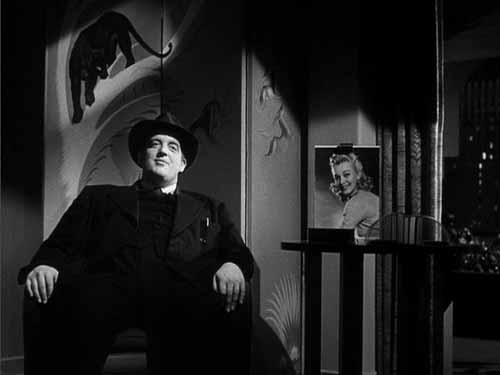
This Gun for Hire (1942) (dir. Frank Tuttle)
The Glass Key (1942) (dir. Stuart Heisler)
The Seventh Victim (1943) (dir. Mark Robson)
Shadow of a Doubt (1943) (dir. Alfred Hitchcock)
Double Indemnity (1944) (dir. Billy Wilder)
The Woman in the Window (1944) (dir. Fritz Lang)
The Mask of Dimitrios (1944) (dir. Jean Negulesco)

Laura (1944) (dir. Otto Preminger)
Murder, My Sweet (1944) (dir. Edward Dmytryk)
Scarlet Street (1945) (dir. Fritz Lang)
Detour (1945) (dir. Edgar G. Ulmer)
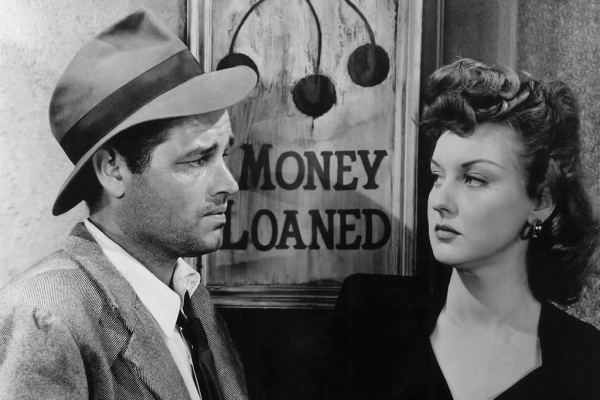
Mildred Pierce (1945) (dir. Michael Curtiz)
Fallen Angel (1945) (dir. Otto Preminger)
The Spiral Staircase* (1945) (dir. Robert Siodmak)
Leave Her to Heaven (1945) (dir. John M. Stahl)
The Big Sleep (1946) (dir. Howard Hawks)
Gilda (1946) (dir. Charles Vidor)
The Strange Love of Martha Ivers (1946) (dir. Lewis Milestone)
The Stranger (1946) (dir. Orson Welles)
The Blue Dahlia (1946) (dir. George Marshall)
The Postman Always Rings Twice (1946) (dir. Tay Garnett)
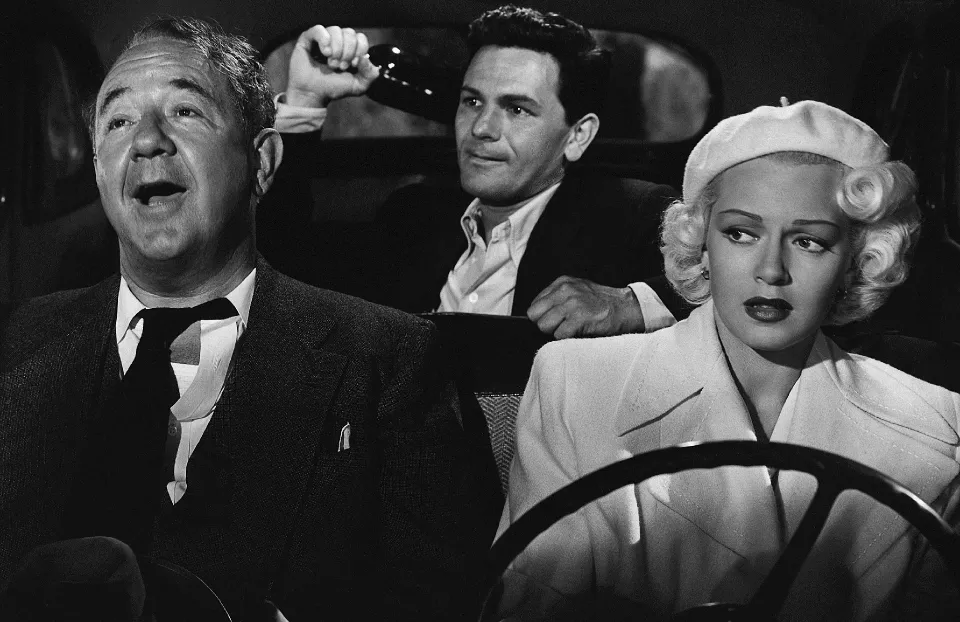
Black Angel (1946) (dir. Roy William Neill)
The Dark Corner (1946) (dir. Henry Hathaway)
Three Strangers (1946) (dir. Jean Negulesco)
The Killers (1946) (dir. Robert Siodmak)
A Woman on the Beach (1946) (dir. Jean Renoir)
Out of the Past (1947) (dir. Jacques Tourneur)
Dead Reckoning (1947) (dir. John Cromwell)
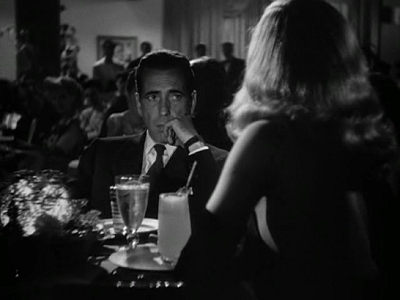
Dark Passage (1947) (dir. Delmer Daves)
Nightmare Alley (1947) (dir. Edmund Goulding)
The Lady From Shanghai (1947) (dir. Orson Welles)
Kiss of Death (1947) (dir. Henry Hathaway)
Odd Man Out (1947) (dir. Carol Reed)
Boomerang! (1947) (dir. Elia Kazan)
Lady in the Lake (1947) (dir. Robert Montgomery)
Sorry, Wrong Number (1948) (dir. Anatole Litvak)
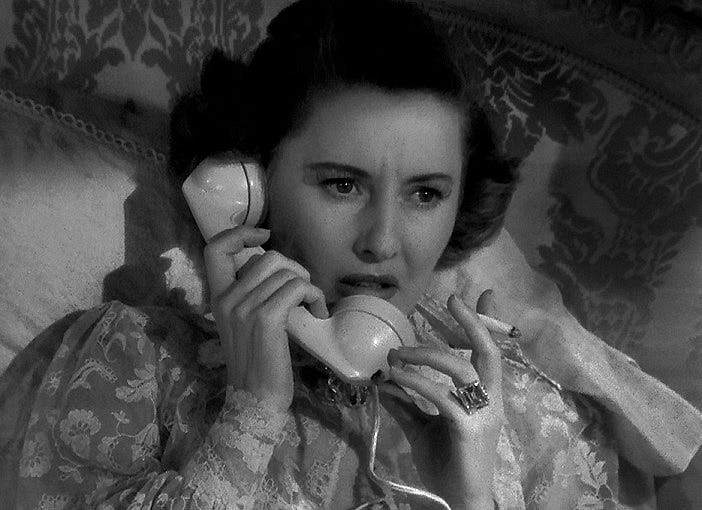
Key Largo (1948) (dir. John Huston)
Sleep, My Love (1948) (dir. Douglas Sirk)
They Live by Night (1948) (dir. Nicholas Ray)
Cry of the City (1948) (dir. Robert Siodmak)
Call Northside 777 (1948) (dir. Henry Hathaway)
The Set-Up (1949) (dir. Robert Wise)
Criss Cross (1949) (dir. Robert Siodmak)
The Third Man (1949) (dir. Carol Reed)
Flamingo Road (1949) (dir. Michael Curtiz)
Rope of Sand * (1949) (dir. William Dieterle)
Gun Crazy (1950) (dir. Joseph H. Lewis)

In a Lonely Place (1950) (dir. Nicholas Ray)
The Breaking Point (1950) (dir. Michael Curtiz)
The Asphalt Jungle (1950) (dir. John Huston)
Night and the City (1950) (dir. Jules Dassin)
Quicksand (1950) (dir. Irving Pichel)
Where the Sidewalk Ends (1950) (dir. Otto Preminger)
Sunset Boulevard* (1950) (dir. Billy Wilder)
On Dangerous Ground (1951) (dir. Nicholas Ray)
Strangers on a Train (1951)(dir. Alfred Hitchcock)
The Narrow Margin (1952) (dir. Richard Fleischer)
The Big Heat (1953) (dir. Fritz Lang)
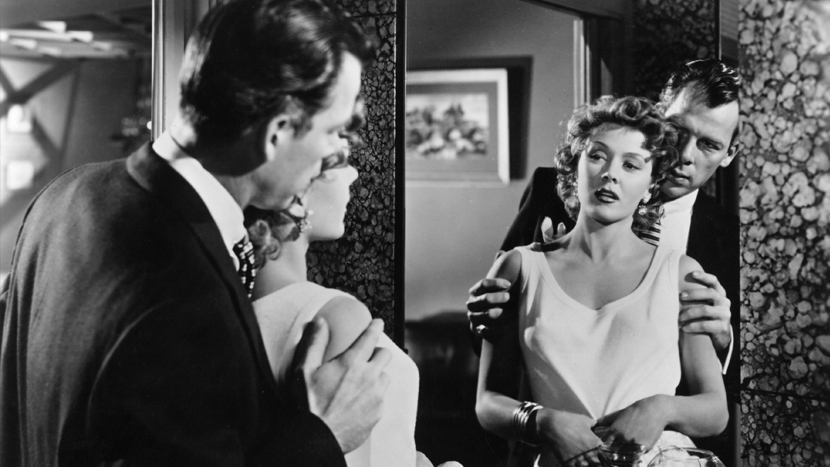
Pick Up on South Street (1953) (dir. Sam Fuller)
The Wages of Fear* (1953) (dir. Henri-Georges Clouzot)
The Big Combo (1955) (dir. Joseph H. Lewis)
Kiss Me Deadly (1955) (dir. Robert Aldrich)
The Desperate Hours (1955) (dir. William Wyler)
Rififi (1955) (dir. Jules Dassin)
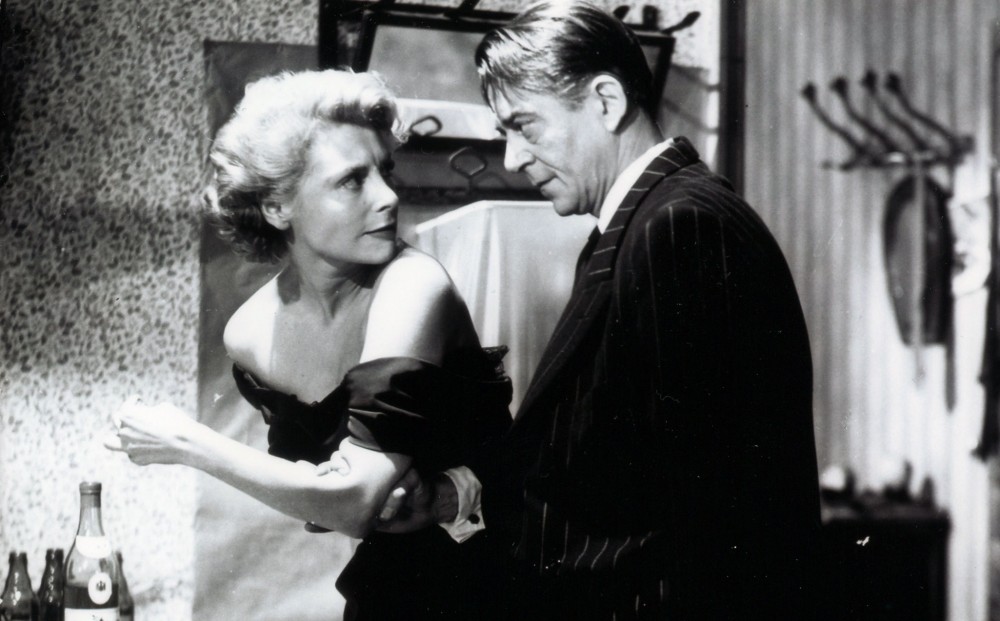
The Killing (1956) (dir. Stanley Kubrick)
While the City Sleeps (1956) (dir. Fritz Lang)
Sweet Smell of Success* (1957) (dir. Alexander Mackendrick)
Lift to the Scaffold (1958) (dir. Louis Malle)
Touch of Evil (1958) (dir. Orson Welles)

Leave a comment...
While your email address is required to post a comment, it will NOT be published.

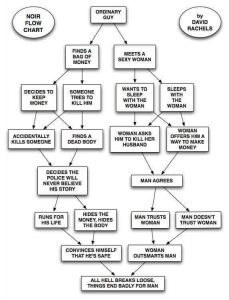

2 Comments